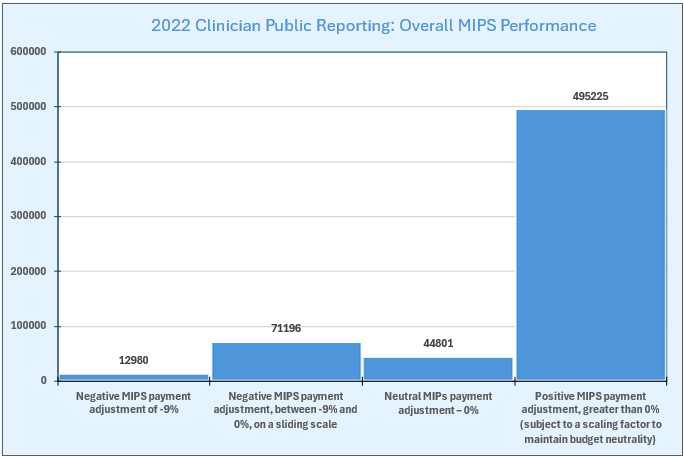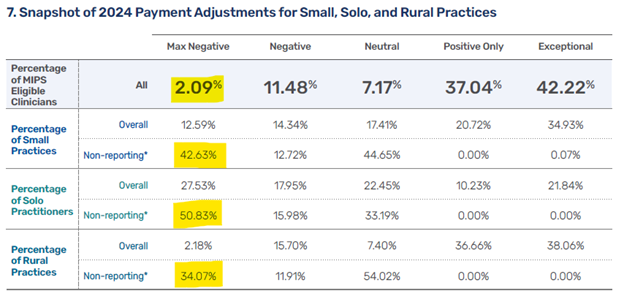 By Jim Tate, EMR Advocate
By Jim Tate, EMR Advocate
LinkedIn: Jim Tate
Host of The Tate Chronicles – #TateDispatches
Read more from Jim Tate
CMS established the Merit-based Incentive Payment System (MIPS) to link physician reimbursement to quality and cost-effective care. The current 2024 Medicare reimbursement adjustments are based on the 2022 performance year scores (0-100) for eligible clinicians (EC). The program is budget neutral, and the potential range of adjustments range from -9% to +9%.
Clinicians can receive positive, neutral, or negative payment adjustments based on their MIPS final score. The performance threshold for the 2022 MIPS performance year was 75 points. A final score of 75 points or higher is required to avoid a negative payment adjustment in the 2024 MIPS payment year. If a clinician is required to report MIPS in 2022 and chooses not to, they would receive the full -9% Medicare payment adjustment in 2024.
Below are two graphic representations of the 2022 data now affecting 2024 Medicare reimbursements for eligible clinicians. The data comes directly from the CMS spreadsheet data file containing over 600,000 rows (PY 2022 Clinician Public Reporting: Overall MIPS Performance). The first histogram reflects the number of ECs in each subgroup decile. The second histogram shows the distribution of reimbursement adjustments in each of the four categories.


If anyone was expecting a bell curve from the data, you will be disappointed. Surprisingly, it was possible to score 75 points in 2022 without EVEN USING an EHR. A look at the data visualizations brings up numerous questions? Is the MIPS program too easy? Is it hackable? Why are so many eligible clinicians able to score so high? Is the quality of healthcare delivery by the high scorers really so exceptional? What about all those poor folks that couldn’t manage to hit the minimum score of 75?
Further date review suggests that the negative adjustment hammer is falling primarily on small and rural practices. The image below from CMS shows this discrepancy in alarming detail.

The 2023 MIPS score will be released in the coming months, and we can gain a sense of what is in store for 2025 reimbursements. Hopefully regulatory and policy adjustments will be made in the coming years to create more of an equitable way to incentivize quality healthcare.
